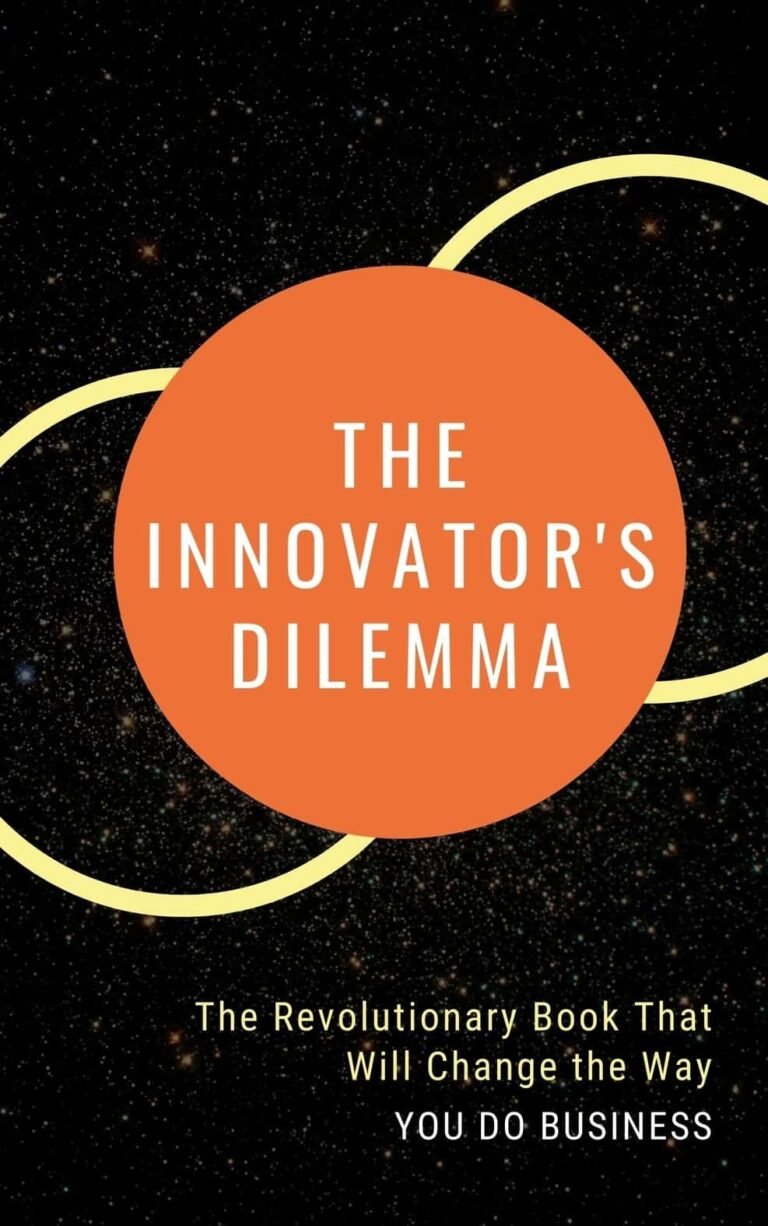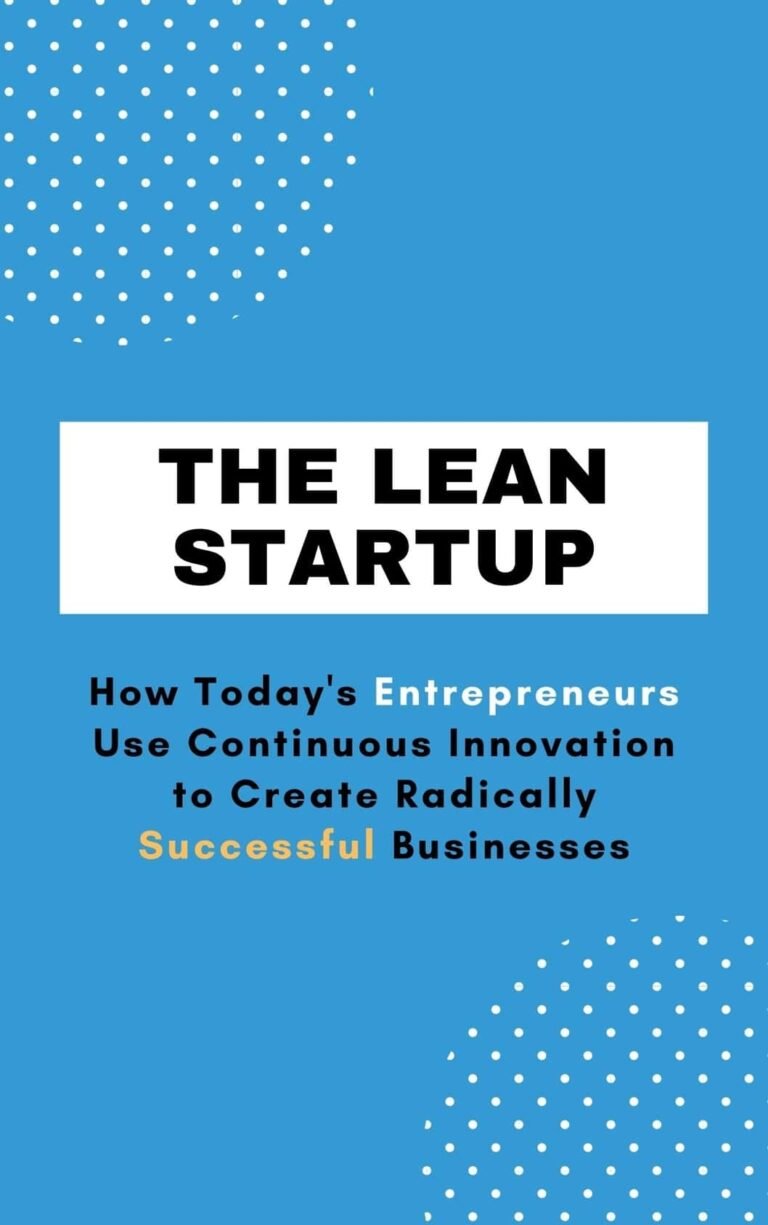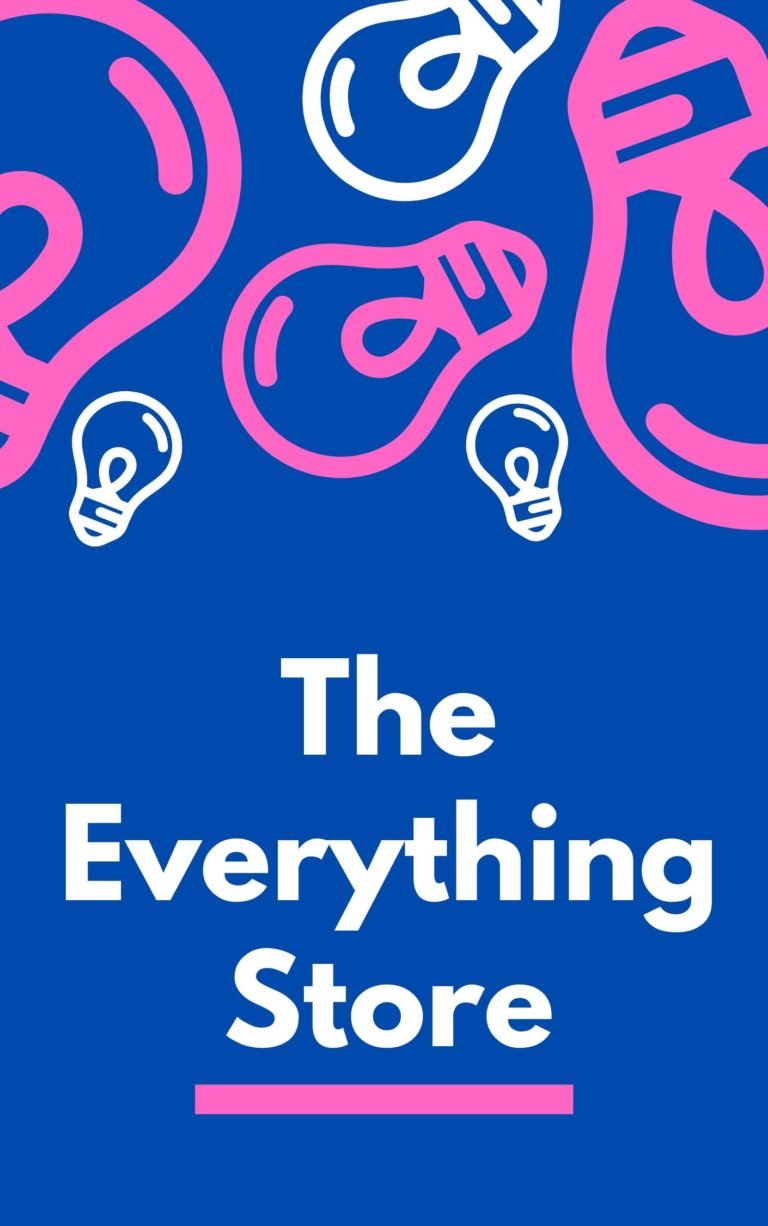Atomic Habits Summary
An Easy & Proven Way to Build Good Habits & Break Bad Ones
James Clear
Rating: 8.7
“A special book that will change how you approach your day and live your life.”
-Ryan Holiday, author of The Obstacle is the Way
Atomic Habit Summary discusses a regular practice or routine that is not only small and easy to do, but it’s also the source of incredible power. A component of the system of compound growth. So forget about setting goals and focus on your systems first.
“You should be far more concerned with your current trajectory than with your current results.”
-James Clear Atomic Habits Summary Make Me Read
Contents
What are Habits?
Habits are behaviors that we perform automatically, with little or no thought. Habits are powerful so if repeated daily, even the smallest actions can have a huge effect. But positive change requires patience. You can be confident that good habits are keeping you on the right trajectory, even if you don’t see immediate results
“You do not rise to the level of your goals. You fall to the level of your systems.”
-James Clear Atomic Habits Summary Make Me Read
Making big changes in your life doesn’t require major upheaval – often, tiny changes to your behavior are enough to lead to the desired results.
“Every action you take is a vote for the type of person you wish to become. No single instance will transform your beliefs, but as the votes build up, so does the evidence of your new identity.”
-James Clear Atomic Habits Summary Make Me Read
Why is it Hard to Build Habits?
“Goals are good for setting a direction, but systems are best for making progress.”
-James Clear Atomic Habits Summary Make Me Read
Now the question is how are habits formed? Behaviors that result in satisfying consequences tend to get repeated until they become automatic. It’s very easy to underestimate the value of making small improvements on a daily basis. Too often we convince ourselves that massive success requires massive action.
“Habits are the compound interest of self-improvement”
-James Clear Atomic Habits Summary Make Me Read
Why should we try and get a little better each day? Because if you can get just 1% better each day over the next year you will be 37 times better by the time you’re done.
“Problem #1: Winners and losers have the same goals.”
-James Clear Atomic Habits Summary Make Me Read
According to atomic habits, habits are the compound interest of self-improvement. The same way that money multiplies to compound interest, the effect of your habits multiplies as you repeat them. They seem to make little or even no difference on any given day, but the impact they deliver over months or years can be enormous.
“Be the designer of your world and not merely the consumer of it.”
-James Clear Atomic Habits Summary Make Me Read
Bad habits compound too; putting off a project to tomorrow seems to make no difference, but when you repeat this type of 1% error day after day these tiny errors can be compounded into toxic results. Success is the product of daily habits not once in a lifetime transformations. Would be aware that your outcomes will lag behind your habits.
“Every action you take is a vote for the type of person you wish to become.”
-James Clear Atomic Habits Summary Make Me Read
Habits appear to make no difference until we cross a threshold and unlock a new level of performance. The plateau of latent potential shows us why it can be hard to build habits. Habits need to persist long enough to break through this plateau and that’s going to take time.
“Habits are the compound interest of self-improvement”
-James Clear Atomic Habits Summary Make Me Read

Forget about Goals, Concentrate on Systems
Goals are the results that you want to achieve and systems are about the processes that lead to those results.
“You do not rise to the level of your goals. You fall to the level of your systems.”
-James Clear Atomic Habits Summary Make Me Read
Atomic habits states that if you focus on the system, the goal will take care of itself. Why is this?
• Because winners and losers have the same goals; so every Olympian wants to win a gold medal and every entrepreneur wants to be successful. Thus it’s the system of the winners that gets them those results and not the goals, because everyone shares the same goal.
• Because achieving a goal is only a momentary change. Also, goals restrict your happiness. Our implicit assumption is once I reach my goal then I’ll be happy, but that sets us up to fail; because either you achieve your goal but you don’t feel fulfilled or you fail to achieve your goal and that makes you feel unhappy.
• Because goals are at odds with long-term progress.
If you were having trouble changing your habits the problem isn’t you, the problem is your system focusing on the overall system rather than a single goal.
It is one of the core themes of Atomic habits; you do not rise to the level of your goals instead you fall to the level of your system. So it’s all about the system, not goals.
“Some people spend their entire lives waiting for the time to be right to make an improvement.”
-James Clear Atomic Habits Summary Make Me Read
The Three Layers of Behaviour Change
You can think about outcomes as being about what you get, processes are about what you do and identity is about what you believe. So when people set out to improve, they’re thinking about the outcome and then thinking about the process they need to follow to achieve that outcome.
“When you can’t win by being better, you can win by being different.”
-James Clear Atomic Habits Summary Make Me Read
It’s hard to change your habits if you don’t change your underlying beliefs that led to your previous behavior. You might start a habit because of motivation, but the only reason you stick with one is that it becomes part of your identity. Every action you take is a vote for the type of person you wish to become; no single instance will transform your beliefs. But as the votes build-up, does the evidence of your new identity.
“If you want better results, then forget about setting goals. Focus on your system instead.”
-James Clear Atomic Habits Summary Make Me Read
Here’s a simple two-step process for change
• Besides the type of person, you want to be.
• Prove it to yourself with small wins small atomic habits.
“The more pride you have in a particular aspect of your identity, the more motivated you will be to maintain the habits associated with it. If you’re proud of how your hair looks, you’ll develop all sorts of habits to care for and maintain it. If you’re proud of the size of your biceps, you’ll make sure you never skip an upper-body workout. If you’re proud of the scarves you knit, you’ll be more likely to spend hours knitting each week. Once your pride gets involved, you’ll fight tooth and nail to maintain your habits.”
-James Clear Atomic Habits Summary Make Me Read
Habit Loops
Habits work like this:
First, there is the cue, the cue triggers your brain to initiate your behavior because it predicts a reward.
Next, you have the craving. What you crave is not the habit itself but the change in the stage it delivers. The response is the actual habit you perform, and this can be a thought or an action and finally, the response delivers a reward.
For Example about the Morning coffee, here is the habit loop:
• Cue = waking up
• Craving = feeling alert
• Action = drinking coffee
• Reward = feeling alert
The four steps together form a neurological feedback loop cue – craving – response – reward ultimately allows you to create automatic habits.
The more you practice this habit loop with any particular habits the more it becomes automatic.
Step 1: The Cue – Make it Obvious
For good habits, we want to make the cue obvious and for bad habits we want them to be invisible. For example, if you want to get better at playing guitar we need something that triggers us to remind us to play guitar. One way of doing this is by putting the guitar in the middle of the living room so that your brain gets triggered more often.
Another great way to introduce new cues is by creating a habit stack. Habit stack is simply the act of adding habits before and after each other.
“The cue triggers your brain to initiate a behavior. It is a bit of information that predicts a reward.”
-James Clear Atomic Habits Summary Make Me Read
Step 2: The Craving – Make it Attractive
To make the habit stick, it is good to get positive feedback, a good way of doing this is by temptation bundling. Temptation bundling basically says that you’re more likely to find a behavior attractive if you get to do one of your favorite things at the same time.
“Professionals stick to the schedule;
amateurs let life get in the way.”
-James Clear Atomic Habits Summary Make Me Read
The second method you could use to make craving more attractive is by joining a culture, where your desired behavior is normal behavior.
If you want to become more well-read and you could join a book club this will hold you accountable and it will be way more fun and of course if you want to break bad habits you want to do the inverse by joining a culture that doesn’t endorse your bad habits.
“A craving is the sense that something is missing. It is a desire to change your internal state. This gap between your current state and your desired state provides a reason to act.”
-James Clear Atomic Habits Summary Make Me Read
Step 3: The Response – Make it Easy
Conventional wisdom holds that motivation is the key to change a habit. If we just want it enough then we will change but the truth is that human behavior follows the law of the lease efforts. We naturally gravitate towards the option that requires the least amount of work, we can use this to our advantage by creating an environment we are doing the right thing is as easy as possible.
“We imitate the habits of three groups in particular: The close. The many. The powerful.”
-James Clear Atomic Habits Summary Make Me Read
For good behaviors you should reduce friction, if you want to get fit you could join a gym that is on your route to work. You can also get your gym bag organized and ready the night before.
For bad behaviors, you should increase friction. If you want to watch less television only turn on the TV as you say out loud the name of the program you want to watch. This will stop mindless viewing and switching channels.
“Success is the product of daily habits—not once-in-a-lifetime transformations.”
-James Clear Atomic Habits Summary Make Me Read
Step 4: The Rewards – Make it Satisfying
As humans, it can be hard to pick up new habits. This is because the beginning of a new habit is mostly sacrificing without any rewards. You go to the gym a few times in a week and nothing really changes, it takes months to see real results.
“You don’t have to be the victim of your environment. You can also be the architect of it.”
-James Clear Atomic Habits Summary Make Me Read
So if you want to get the habit to stick you need to figure out a way to give yourself an immediate reward. One technique you can use when the reward is long term is to set up a loyalty system for yourself.
“Good habits can make rational sense, but if they conflict with your identity, you will fail to put them into action.”
-James Clear Atomic Habits Summary Make Me Read
For example imagine if you want to give up alcohol, on its own, there is no satisfaction in simply abstaining; but what if you transfer $25 to your holiday bank accounts every week it went without alcohol? You’ll be immediately rewarding yourself for your new habit.
“The cue is about noticing the reward. The craving is about wanting the reward. The response is about obtaining the reward.”
-James Clear Atomic Habits Summary Make Me Read
How to Form Good Habits
Certain stimuli can trigger habitual behavior. Once you understand that, you can use this knowledge to change your habits.
• Encourage better habits by changing your environment. Make your cues as obvious as possible, and you’ll be more likely to respond to them! For example, you want to eat healthier snacks? Leave them out on the counter, rather than hiding them in the salad drawer.
• Use implementation intentions. Don’t make vague statements such as “I will eat better”. Instead, create a clear plan of action, and set out when and where you will carry out the habit you want to cultivate.
• Build temptation. Humans are motivated by the ANTICIPATION of reward. Our brain not only releases dopamine (the feel-good hormone) when we do pleasurable things but also when we anticipate them. Note that making habits attractive will help you stick to them. Link the habit you want to form (but are not enjoying) with a behavior that you’re drawn to. For example, allow yourself to watch episodes of your favorite show while you’re cycling at the gym.
• Make the habit as easy to adopt as possible. Reduce friction for good habits, increase friction for bad habits.
• Use the two-minute rule. Make any new activity feel manageable by only committing to two-minutes of it. This is a way to build easily achievable habits, and those can lead you on to greater things. Simply getting started is the most important step!
• Make your habits immediately satisfying. When you’re pursuing habits with a delayed return, try to attach an immediate gratification to them.
“In fact, the tendency for one purchase to lead to another one has a name: the Diderot Effect. The Diderot Effect states that obtaining a new possession often creates a spiral of consumption”
-James Clear Atomic Habits Summary Make Me Read
How to Keep Your Habits on Track
Option 1: Habit Tracker
For example: Use a calendar or diary to create a habit tracker. Also, cross off every day that you manage to stick to your good habit. Habit tracking itself is an attractive, satisfying habit, which is why it is so effective.
Option 2: Contract
Develop a habit contract that imposes negative consequences if you fail to stay on track. Try to involve other people, so simply knowing that someone is watching you can be a powerful incentive to keep going.
“Once your pride gets involved, you’ll fight tooth and nail to maintain your habits.”
-James Clear Atomic Habits Summary Make Me Read
Check out Make Me Read for summary of the best business books.
Don’t forget to check us out of Facebook, LinkedIn, Instagram, Twitter, and Medium.






